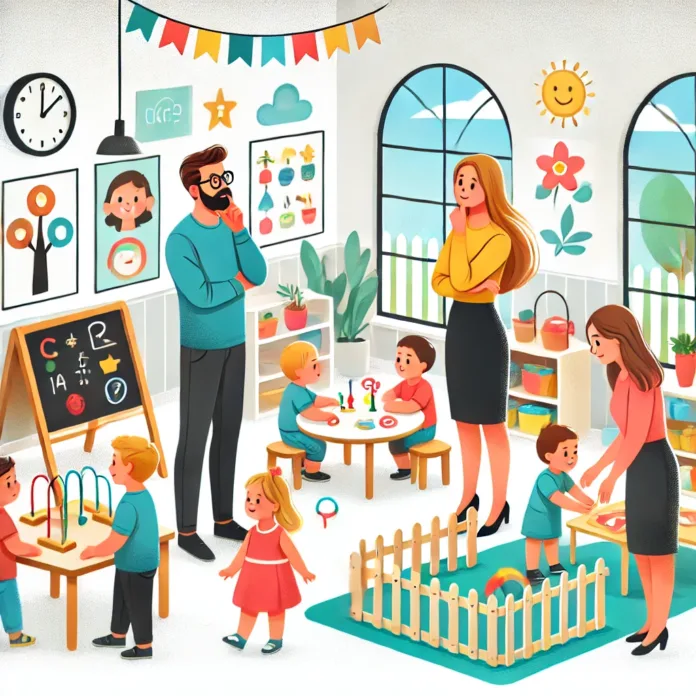Choosing the right preschool for your child is a crucial decision that lays the foundation for their educational journey and social development. The preschool years are formative, and finding an environment that nurtures, supports, and challenges your child is essential. Below, we’ll walk you through the most important factors to consider when making this decision, as well as practical steps to evaluate and select the best preschool for your little one.
1. Understand Your Child’s Needs
Every child is unique, and understanding your child’s personality, learning style, and interests is vital when choosing a preschool. Consider the following aspects:
- Learning Style: Some children thrive in structured environments, while others do better with more open-ended exploration. Recognize whether your child learns best through hands-on activities, visual aids, or storytelling.
- Social Needs: Evaluate whether your child enjoys group activities or prefers one-on-one attention. This can guide you in selecting a program with a suitable teacher-to-student ratio.
- Special Requirements: If your child has allergies, developmental delays, or behavioral challenges, ensure the preschool staff has experience accommodating these needs.
2. Determine Your Priorities
Before diving into research, identify your family’s priorities. Ask yourself the following questions:
- Location and Proximity: How far are you willing to travel each day? Do you prefer a preschool near your home or workplace?
- Budget: What is your budget for tuition fees, and are there hidden costs like supplies, field trips, or meals?
- Curriculum Philosophy: Are you drawn to a specific teaching approach, such as Montessori, play-based, or Reggio Emilia?
- Schedule: Do you need a full-day program, half-day program, or flexible schedules to accommodate your work hours?
3. Research Preschool Philosophies
Different preschools adopt different educational philosophies, each catering to various developmental needs. Familiarize yourself with these philosophies:
- Montessori: Emphasizes independence, hands-on learning, and self-paced progress. The classrooms are typically multi-age, encouraging peer learning.
- Play-Based: Focuses on learning through play, fostering creativity and social interaction.
- Reggio Emilia: Centers on child-led exploration and project-based activities, often documenting a child’s progress through portfolios.
- Waldorf: Encourages imaginative play, art, and holistic development, with minimal focus on technology.
- Academic Focus: Prepares children for kindergarten with a structured curriculum emphasizing literacy and numeracy.
4. Research and Shortlist Preschools
Once you’ve outlined your priorities and philosophy preferences, research potential preschools in your area:
- Online Reviews and Ratings: Read reviews on platforms like Google, Yelp, or parenting forums to understand the preschool’s reputation.
- Word of Mouth: Ask other parents, neighbors, or colleagues about their experiences and recommendations.
- Preschool Visits: Attend open houses or schedule tours to observe the school’s environment firsthand.
5. Evaluate the Environment
When visiting preschools, pay close attention to the environment and facilities. Here’s what to look for:
- Cleanliness and Safety: Ensure the premises are clean, safe, and childproofed, with measures like secure gates and padded corners.
- Classroom Setup: Look for bright, engaging classrooms with age-appropriate toys, books, and learning materials.
- Outdoor Space: Check if the preschool has a safe outdoor play area, as physical activity is crucial for a child’s development.
- Teacher-Child Interaction: Observe how the teachers interact with children. Are they patient, encouraging, and approachable?
6. Assess the Curriculum
A preschool’s curriculum significantly impacts your child’s learning experience. Review the following aspects:
- Balance Between Play and Learning: Ensure the program combines structured activities with free play, allowing children to develop academically and socially.
- Language Development: Look for activities promoting early literacy skills, such as storytelling, singing, and phonics.
- Creative Arts: Check if the preschool incorporates art, music, and imaginative play to foster creativity.
- STEM Introduction: Some preschools introduce basic science, technology, engineering, and math concepts in a playful, engaging manner.
7. Check Teacher Qualifications
Qualified, compassionate teachers are the heart of any great preschool. Consider these factors:
- Educational Background: Ensure the teachers have relevant qualifications in early childhood education.
- Training and Experience: Look for teachers with experience in working with preschool-aged children and ongoing professional development.
- Communication Skills: Teachers should communicate effectively with both children and parents, providing regular updates on a child’s progress.
8. Examine Class Sizes and Ratios
Small class sizes and low teacher-to-student ratios allow for more personalized attention. Check if the preschool meets the recommended standards for class size in your region.
9. Ask About Health and Safety Policies
Ensure the preschool prioritizes your child’s safety and well-being by asking about:
- Emergency Procedures: Are fire drills, lockdowns, and evacuation plans in place?
- Hygiene Practices: What steps are taken to maintain hygiene, especially during flu season or outbreaks?
- Allergy Management: How do they handle food allergies or other health concerns?
- First Aid Training: Are the staff trained in first aid and CPR?
10. Build Strong Communication Channels
Open communication between parents and preschool staff is essential. Look for:
- Parent-Teacher Meetings: Are there regular opportunities to discuss your child’s development?
- Daily Updates: Does the preschool provide updates through notes, emails, or apps?
- Feedback System: Is there a channel for addressing concerns or sharing feedback?
11. Trust Your Instincts
Finally, trust your gut feeling. If a preschool aligns with your priorities and feels like a good fit for your child, it’s likely the right choice.
Conclusion
Choosing the right preschool for your child involves a balance of research, observation, and intuition. By understanding your child’s needs, evaluating different preschools, and considering factors like location, curriculum, and teacher qualifications, you can make an informed decision that sets your child up for a successful educational journey.
